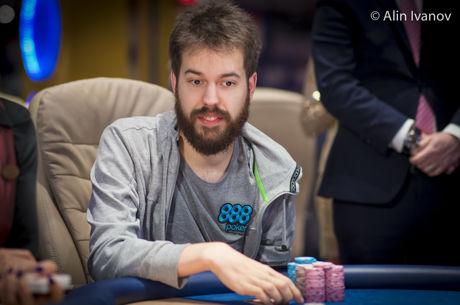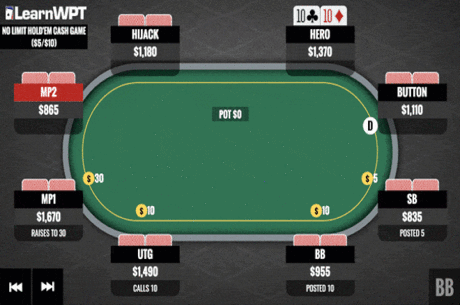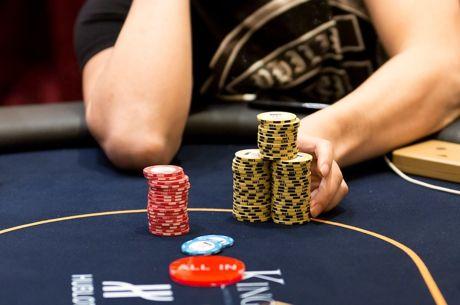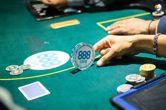No One's Betting for You: Get Value From Strong, 'Hidden' Hands
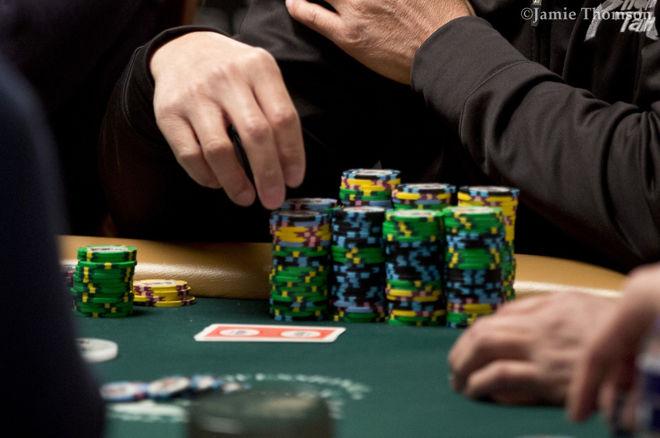
Here's a low-stakes hand of online poker I played a while back that featured a not uncommon sequence of events, at least among recreational players or "non-regs."
After raising with Q?Q? from late position and getting one caller from the big blind, my opponent quickly check-called my continuation bet after a K?8?2? flop. We'd been at the same table for a while, during which time he'd revealed himself to be one of those "sticky" loose-passive types frequently found at these small limits.
The A? came on the turn, and this time after the big blind checked I chose to check as well. The river brought the 6?, my opponent checked, and I checked behind again. He then showed 6?6? for a rivered set of sixes, and won the pot.
I lamented not having bet the turn, although looking back I imagine he might have called me, anyway, not wanting to throw away his pocket pair even with both an ace and king on the board.
But my misgiving at that missed opportunity was offset somewhat by my relief that he hadn't tried to get value with a bet on fifth street. If the river bet had been smartly-sized (say, a third of the pot or thereabouts), I might well have been the one not wanting to fold a pocket pair, and might have paid him off.
That's actually the part of this hand I'd like to highlight as "not uncommon" �� namely, my opponent's failure to bet a strong, "hidden" hand on the river.
A common postflop mistake in low- and micro-limit NL games is failing to make leading bets with strong poker hands.
Sometimes players who do this are plotting to slow play such monsters and bet later streets. Other times they are inspired by their big hands to try to make big check-raises (if given the opportunity, that is).
More often, though, and particularly with passive players, they are so used to checking and calling that when they do make a strong hand, they just aren't prepared to bet. If they are conspicuously tight as well, they might be worried that making a leading bet will "scare" an opponent into folding, thus leading to checking instead.
Regardless of the (mistaken) rationale for not betting, it is important for players of all styles and images to learn not to miss out on value when making these unlikely "hidden" hands, in particular on the turn or river when the pots are larger and the value to be had potentially greater.
"Hidden" or unsuspected hands generally use both hole cards, such as when a pocket pair improves to a set. Making a straight or flush with only one of your hole cards �� e.g., you have K?J? and the board has come A?7?8?9?10? �� isn't really a hidden hand since the straight possibility is in clear view.
Here are three examples of the kinds of hands I mean:
1. Sets
We can start with my opponent's example �� making a set with a pocket pair. Especially with medium or low pairs, and especially when they come late in the hand (on the turn or river), sets are almost always difficult for other players to suspect.
Notice how in the above hand that 6? on the river might rightly be regarded as a "blank" to most. It didn't complete any draws, nor did it intimidate in the way big cards often do (e.g., as the king or ace did before).
Having gotten there on the river, my opponent surely should have bet and sought value. After all, sets don't come around that often!
2. Backdoor straights and flushes
Nothing funner than runner-runner, the saying goes. Filling a "backdoor" or "runner-runner" draw means using both the turn and river to complete the draw, which necessarily means the draw itself didn't materialize until the turn, and so might well have escaped notice.
Say you have 9?8? and the flop comes K?J?10?. The turn then brings the 5?, at which you point you finally have a diamond flush draw. The A? river then fills your flush, though it's possible your opponent might not be so focused on flushes, thinking instead about those Broadway cards and possible straights introduced by the flop.
Backdoor straights tend to be even more hidden than backdoor flushes, generally speaking, since three of the same suit on the board is usually more obvious than are three straight-making cards. Even more hidden are backdoor straights that require two exact hole cards �� e.g., you have 9?7? and the board comes A?10?2?6?8?.
3. The surprise second pair
Pairing both of your hole cards also often constitutes a strong, hidden hand. That isn't going to happen very often, but when it does it can prove a profit-making opportunity.
Say you called a raise with A?8? and that same A?10?2?6?8? board rolled out, giving you two pair on fifth street. Your continued calls on the flop and turn might have looked like chasing a flush and/or straight, thus making the pairing of your kicker on the end less suspected by an opponent who has been betting ace-king or ace-queen.
Having backed into such a strong hand, bet it. Indeed, whenever you have one of these hands that you really "shouldn't" have (so to speak), playing aggressively is often the way to go.
A wide variety of opponents �� good players, bad players, and those in between �� are going to want to call your river bets in such cases, even with only modest holdings themselves. Your leading bet on the river on that A?10?2?6?8? board looks like bluffing a busted draw, even more so if you've been check-calling up to that point.
You'd be surprised how often players will talk themselves into calling your river value bets when the strong hand you hold �� be it a set, a backdoor straight or flush, or two pair �� is not a likely one for you. In fact more often than not such calls are good ones for them, serving to catch bluffers and to reduce opponents' likelihood of trying to bluff them.
All of which is to say, don't miss out betting your big hands, especially the "hidden" ones.

